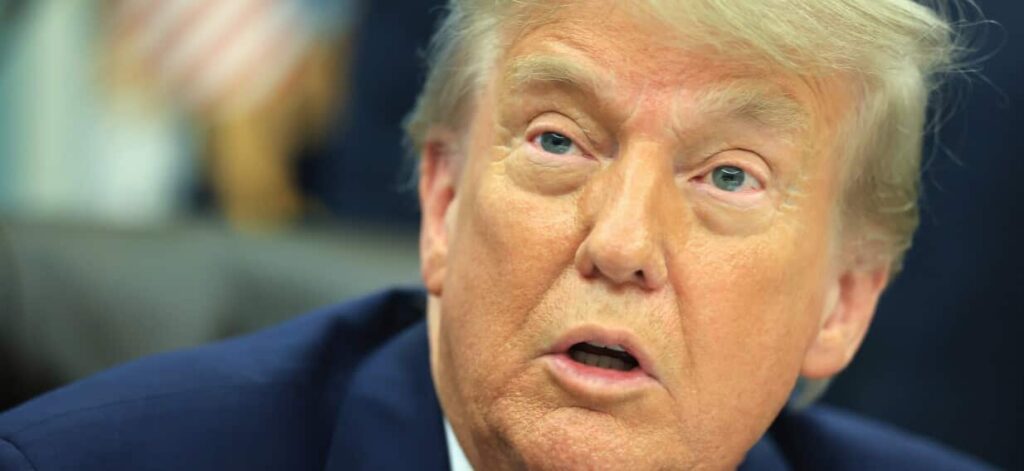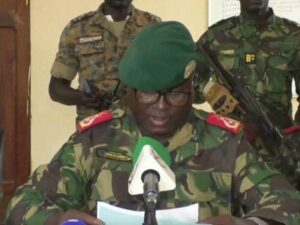
Fadumo (not her real name), a widowed mother of three, embarked on a grueling two-day journey with her children under the scorching sun to reach a displacement camp on the outskirts of Baidoa in southern Somalia. This region is already struggling to cope with overwhelming humanitarian needs. “The reason I was displaced is because of hunger and my inability to feed my children. Their father has passed away, so I moved here in search of support. I recently arrived here and have been living here for two months, but I haven’t received any support yet,” she told SBS News.
Like thousands of others, Fadumo finds herself trapped in a precarious situation, caught between a past she fled and an uncertain future dependent entirely on external aid. For decades, the US Agency for International Development (USAID) has been a cornerstone of Somalia’s humanitarian aid. At its peak, USAID accounted for 65% of the country’s foreign assistance, according to Dr Abdiqani Sheikh Omar, a former health ministry director and current government adviser.
The Human Cost of USAID Cuts
In 2019 alone, the United States contributed nearly half of all humanitarian aid to Somalia, with USAID’s Bureau for Humanitarian Assistance playing a crucial role in funding frontline services like Save the Children’s malnutrition programs. However, these lifelines are now disappearing following USAID’s official shutdown, announced on Tuesday. The dismantling of the agency, described by Donald Trump as “run by a bunch of radical lunatics,” began soon after he commenced his second term.
Mu’awiye Mohamed, who oversees a camp for internally displaced people, warns that thousands will be left with nowhere to turn. “This situation is not good. The aid was supporting a large number of internally displaced people, so the recent aid cuts of USAID by Donald Trump have had a negative impact on vulnerable communities,” he said.
Malnutrition Clinics on the Brink
In Somalia, international aid is not just about food and medicine; it sustains an entire system of camps that provide essential care, especially for families displaced by conflict and drought. At malnutrition clinics in Baidoa, mothers like Layla (not her real name) wait for hours in the sweltering heat, desperate for their children to receive medical attention. “I was told he’s malnourished,” she said quietly, cradling her baby, Bilal. “If I hadn’t brought him here, he could have died at home.”
This is one of the few remaining lifelines, and it’s slipping away fast, as US aid cuts force critical nutrition centers to shut their doors. Save the Children reports that all its nutrition centers in Baidoa will close by the end of this month. More than 120 centers have already shut down, leaving over 55,000 children at risk of dying from preventable hunger.
“This is a very dangerous turning point,” said Dr Binyam Gebru, deputy country director for Save the Children in Somalia. “All the services have been totally withdrawn, we were not prepared for it. These are sick children because of malnutrition and now if you do not provide services they will die.”
Local Efforts Amidst Crisis
With formal support systems collapsing, local health workers — often unpaid, under-equipped, and overwhelmed — are stepping in to fill the void. Volunteers like Sahra Abdullahi Aden, a nurse who continues to work without pay, are crucial. “Many families can’t afford medicine,” she said. “When the clinic runs out of drugs, sometimes we pool our own money to help the patients.”
Local leaders are now sounding the alarm. Among them, Somalia’s vice-minister for humanitarian and disaster management, Abdullahi Isak Ganay. “If the aid is cut during this crisis, we could end up in a situation like we did in 1991,” he said.
That year, famine swept across Somalia, driven by a deadly mix of civil war, drought, and governmental collapse. An estimated 300,000 people died — most of them children — in what became one of the worst humanitarian catastrophes of the 20th century.
Security and Stability Concerns
“There is a serious difficulty. Al-Shabaab controls a large part of the country, making it unsafe for people to farm freely. This, combined with repeated rainy season failures, has led to frequent crop failures. Now, people don’t know what to do,” Ganay added.
Some experts say US aid cuts in Somalia are fueling a resurgence of al-Shabaab — the al-Qaeda-affiliated militant group that has long waged an insurgency against the Somali government. The militant group is exploiting the collapse of essential services to regain territory, while the withdrawal of US support for elite Somali forces has weakened security operations. Al-Shabaab has launched its most aggressive offensive in years, edging closer to the capital, Mogadishu.
“If you look at what al-Shabaab has gained of late, it is a huge concern for us,” Gebru said.
The End of USAID
Gebru believes the USAID cuts will change the humanitarian aid sector forever. “There is a lesson to be learned: we have been too dependent on one resource,” he said. “We are looking at diversification and other funding instead of relying on aid.”
Founded in 1961 as then-US President John F. Kennedy sought to leverage aid to win over the developing world during the Cold War, USAID has now been incorporated into the State Department — after Secretary of State Marco Rubio slashed 85% of its programs.
In a farewell to remaining staff, former presidents George W. Bush and Barack Obama — as well as U2 frontman Bono — saluted their work and emphasized its continued necessity. Obama, who has been sparing in openly criticizing Trump, said that ending USAID was “inexplicable” and “will go down as a colossal mistake.”
“Gutting USAID is a travesty and it is a tragedy because it’s some of the most important work happening anywhere in the world,” Obama said.
Rubio, however, has painted a drastically different picture of USAID. He has argued that USAID’s “charity-based model” has fueled an “addiction” among developing nations and that trade is more effective. “Beyond creating a globe-spanning NGO industrial complex at taxpayer expense, USAID has little to show since the end of the Cold War,” Rubio wrote in an essay.
As Somalia grapples with the fallout from these cuts, the international community watches closely, pondering the future of foreign aid and humanitarian assistance in a rapidly changing world.






